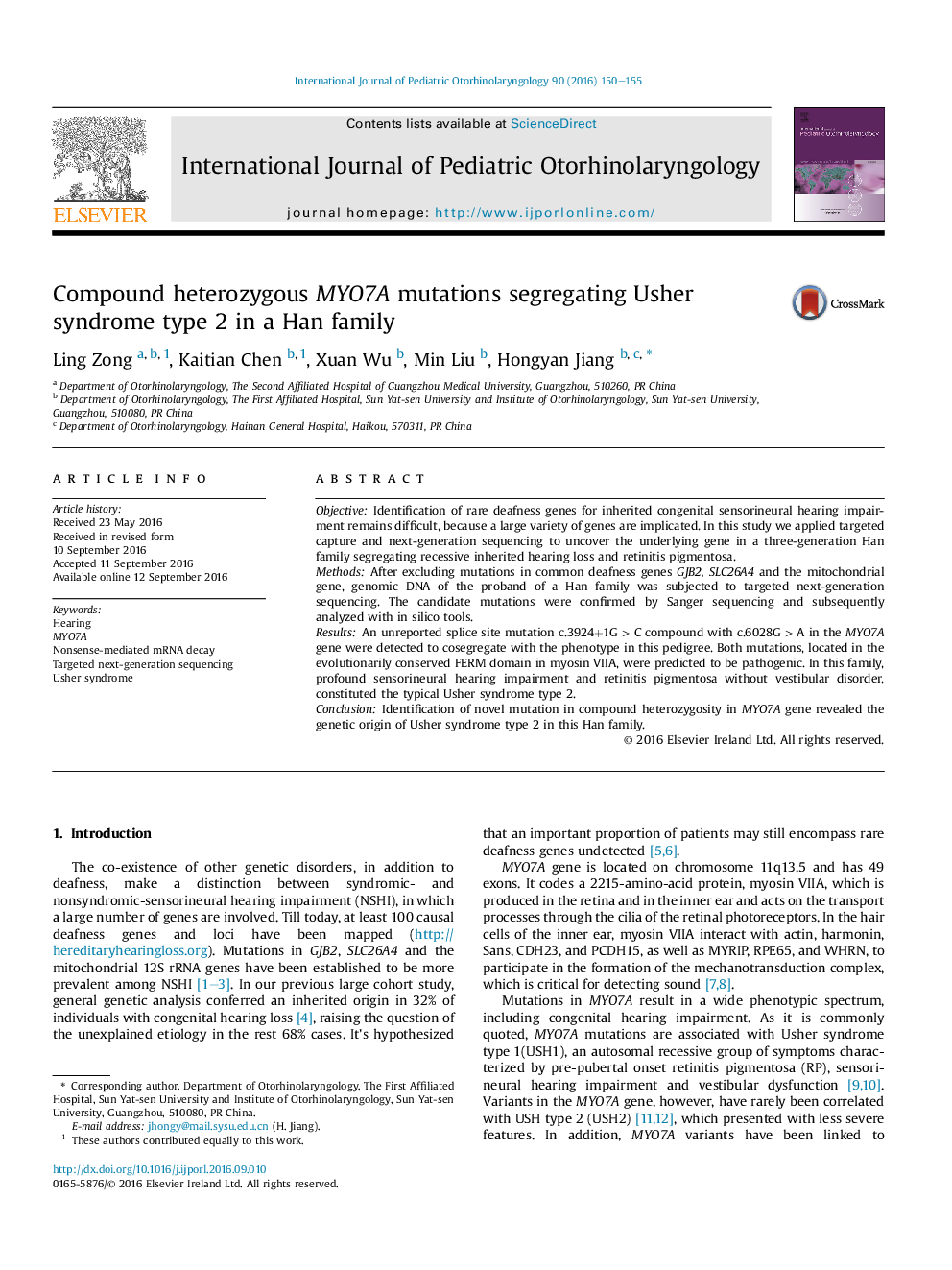| Article ID | Journal | Published Year | Pages | File Type |
|---|---|---|---|---|
| 6213015 | International Journal of Pediatric Otorhinolaryngology | 2016 | 6 Pages |
ObjectiveIdentification of rare deafness genes for inherited congenital sensorineural hearing impairment remains difficult, because a large variety of genes are implicated. In this study we applied targeted capture and next-generation sequencing to uncover the underlying gene in a three-generation Han family segregating recessive inherited hearing loss and retinitis pigmentosa.MethodsAfter excluding mutations in common deafness genes GJB2, SLC26A4 and the mitochondrial gene, genomic DNA of the proband of a Han family was subjected to targeted next-generation sequencing. The candidate mutations were confirmed by Sanger sequencing and subsequently analyzed with in silico tools.ResultsAn unreported splice site mutation c.3924+1GÂ >Â C compound with c.6028GÂ >Â A in the MYO7A gene were detected to cosegregate with the phenotype in this pedigree. Both mutations, located in the evolutionarily conserved FERM domain in myosin VIIA, were predicted to be pathogenic. In this family, profound sensorineural hearing impairment and retinitis pigmentosa without vestibular disorder, constituted the typical Usher syndrome type 2.ConclusionIdentification of novel mutation in compound heterozygosity in MYO7A gene revealed the genetic origin of Usher syndrome type 2 in this Han family.
